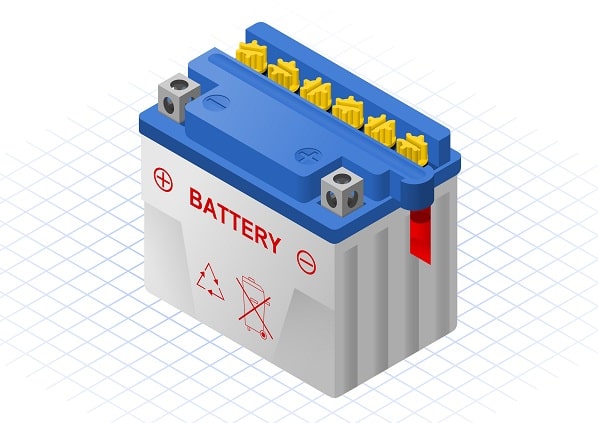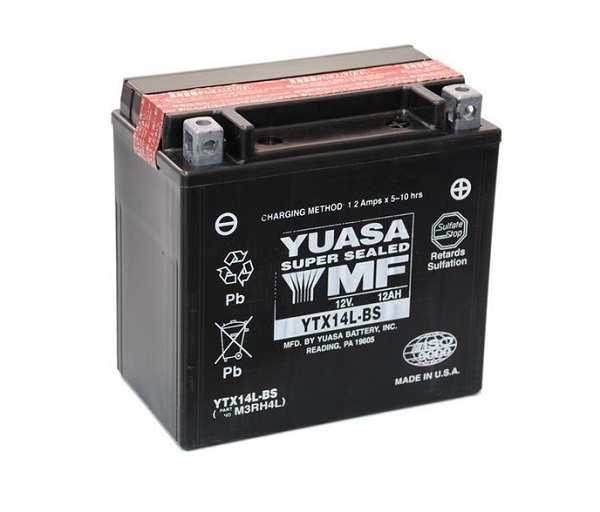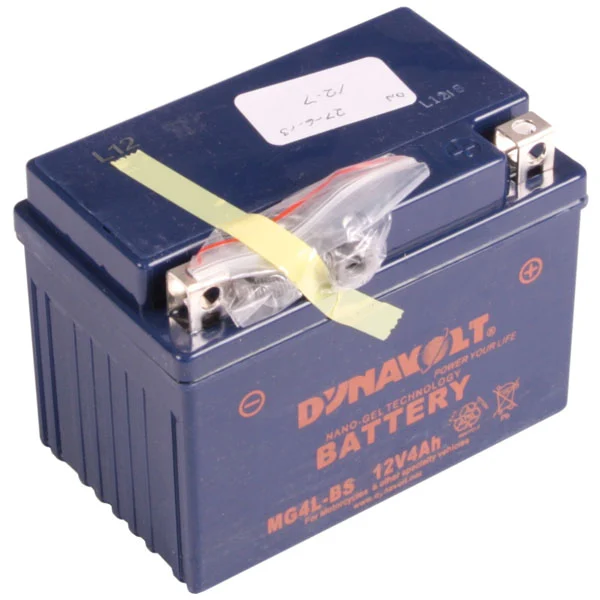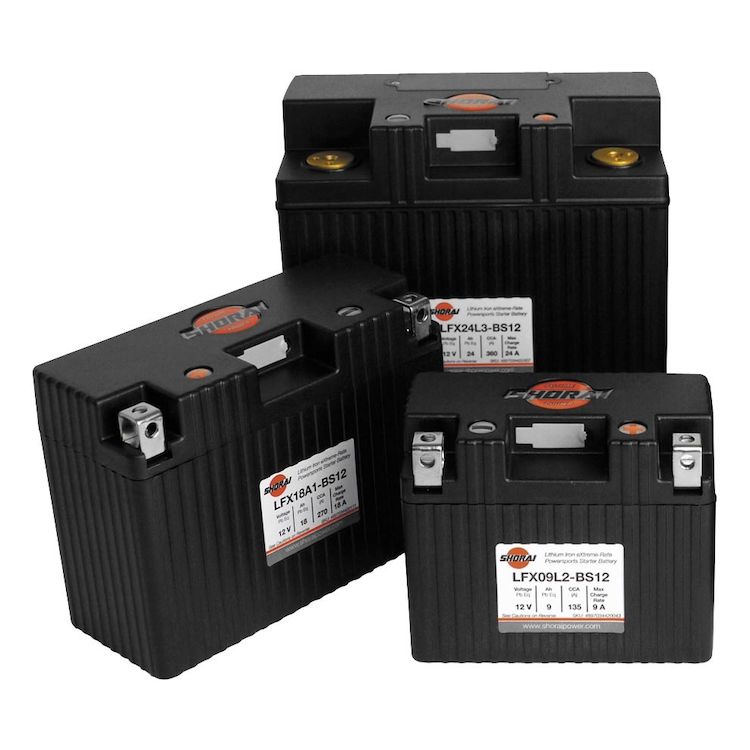Charging a motorcycle battery can take anywhere from 2 to 24 hours. That’s a big range. Luckily, experience has taught me that you can narrow this down if you know a bit more about your battery type and its ratings as well as your charger.
The following is what I’ve learned about charging a battery correctly and the time it takes.
How Do Amps Affect Charging Time?
An Amp, which is short for Ampere, is a unit for measuring electric current. In other words, it measures how fast electricity moves through a device.
As you can probably guess, then, the Amp rating of both your charger and the battery, is a major part of what determines how long it takes to charge your motorcycle battery.
Basically, for a given battery capacity, a charger with more Amps is going to charge it faster. A charger charging at 10 Amps will charge twice as fast as one charging at 5 Amps. Some may even have settings that allow you to change the Amps and therefore the charging speed.
You can calculate the charging time if you know the capacity of the battery.
For example, if you have a battery with 10 Amp-hours of capacity and you’re charging it at 2 Amps, divide 10 by 2, and you’ll get a charging time of 5 hours.
This isn’t going to be exact due to the internal resistance of the battery and the fact that you won’t be charging from totally dead, but it’s a good way to estimate.
Charging Times by Battery Types
As you’ve seen, battery charging times vary a lot depending on the battery capacity and the charger.
To give you a rough idea, I’ve calculated all these charging times based on a battery with 10 Amp-hours of capacity being charged at the maximum speed for that battery type.
Wet Cell

Wet cell batteries are the oldest type of motorcycle battery. They’re a kind of lead-acid battery, called “wet” because they actually have liquid acid inside, which can be dangerous. The liquid can also evaporate, so it must be replaced and maintained over time.
Approximate minimum charging time: 5 hours
AGM

AGM stands for “Absorbent Glass Mat,” which is a weird term that basically just means this is an advanced lead-acid battery that doesn’t require the same maintenance as an old wet-cell battery.
They usually don’t leak acid or suffer from corrosion. However, while they’re much easier to charge than wet-cell batteries, the charging time itself is more or less the same.
Approximate minimum charging time: 5 hours
Gel Cell

Gel cell batteries are another type of advanced lead-acid battery. Instead of using a different kind of internal structure like AGM batteries, they improve on the original wet-cell design by using gel instead of liquid acid.
They’re very stable and durable and are mostly maintenance-free. However, you have to use fewer Amps when charging them, leading to longer charging times.
Approximate minimum charging time: 10 hours
Lithium

Lithium motorcycle batteries, which you may see called LiFePO4 batteries, are the latest in battery tech.
They’re much safer and more stable than lead-acid batteries, can handle more charging cycles before they begin to lose capacity, and have a more consistent voltage.
When it comes to charging, they can handle faster charging speeds than lead-acid battery types. For example, a lithium battery with 10 Amp-hours of capacity can be charged at 5 Amps.
Approx. min. charging time: 2 hours
What Is Trickle Charging?
Trickle charging works by just pumping a “trickle” of electricity into the battery. Technically, especially for lead-acid batteries, this means charging the battery at the same rate it loses charge while just sitting there. In this way, the charger is constantly replacing lost charge, keeping the battery fully charged at all times.
In a more general sense, you may hear “trickle charging” used to refer to just slow charging in general. You can charge batteries at a range of different speeds, and using a lower speed can have a lot of benefits.
The term “trickle charging” is often used for lithium batteries as well, but this is slightly misleading. It’s possible to overcharge lithium batteries, which will ruin them.
However, most lithium motorcycle batteries have a feature called a Battery Management System or BMS. A special kind of charger called a “smart” charger communicates with the BMS and will shut off before overcharging the battery.
Then, when the battery loses charge, it will turn back on again. This way you can leave the charger on the battery and keep it fully charged without having to worry. Read more about lithium battery chargers.
Is Trickle Charging a Good Idea?
Trickle charging is a great idea, especially for lead-acid batteries. Faster charging speeds can risk damaging the battery by causing corrosion or damaging the internal structure through increased temperatures.
More importantly, trickle charging lets you leave a charger on the battery. This is great for motorcycles because, if you’re anything like me, you leave your motorcycle in the garage collecting dust from December to April.
You don’t want your battery losing all its charge during the offseason.
For one thing, it’s always a hassle when you’re excited about that first spring ride and realize you’re going to have to put it off till tomorrow so you can charge the battery. More importantly, though, it can be bad for the battery to let it die.
The same holds true for lithium batteries. Just remember that your battery should have a BMS and you should be using a smart charger if you’re going to trickle charge it over the off-season. You’ll often see these called “battery maintainers.”
FAQ
How Long Does a Dead Motorcycle Battery Take to Charge?
It can take anywhere from 2 to 24 hours to charge a dead motorcycle battery. This all depends on the capacity of the battery and the charging rate of the charger. Lithium batteries can be charged faster than lead-acid batteries.
However, this timeframe is based on a “dead” battery being one that doesn’t have enough charge left to start a motorcycle but still technically has a little bit of juice left. A totally dead battery with no electricity left in it at all is another animal entirely.
Can a Completely Dead Motorcycle Battery Be Recharged?
A truly dead battery, one that has absolutely no charge left in it, cannot be recharged. This is true for both lead-acid and lithium batteries.
Lead-acid batteries that are left to sit for a long period of time slowly discharge all their electricity. Left for too long, and they become unrecoverable.
Lithium batteries are much the same. However, thanks to their BMSs, many lithium batteries are capable of holding on to that last little bit of juice for a long time. Even if a smart charger doesn’t recognize the battery at first, there may be enough left to recharge it using a setting called “force mode.” If this doesn’t work, though, it probably means the battery is totally dead and you’re out of luck.
Should I Charge My Motorcycle Battery Every Day?
You don’t have to charge your motorcycle every day, but you should charge it as often as possible.
It’s especially important for lead-acid batteries that you keep them fully charged, so you should charge them at least once a month.
Lithium batteries are more resistant to lower charges, but it’s still a good idea to keep them charged.
For both battery types, I recommend using a smart charger, trickle charger, or battery maintainer on the battery whenever you aren’t riding your bike. This will keep your battery fully charged, healthy, and ready to go.